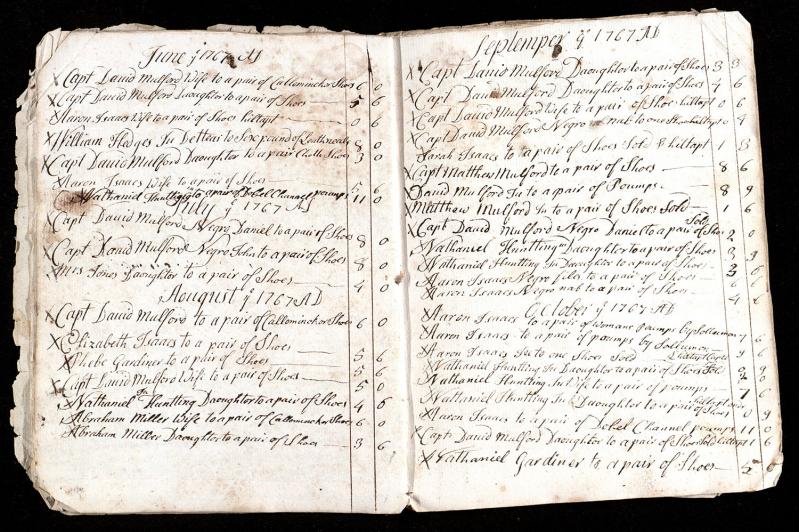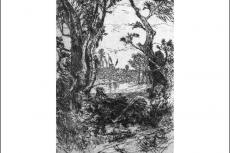Shown here is the account book that Daniel Hedges, a shoemaker in East Hampton, kept from 1765-1771. Hedges (1742-1831) was a son of John Hedges and Elizabeth Talmage Hedges. In this account, Hedges identifies each pair of shoes he sells, some listed as "pomps," or pumps, and others simply as "shoes." He also notes repairs to soles of shoes and caps put on heels.
As strange as it may sound, the account books kept by Daniel and the other Hedges family shoemakers are among the best sources for identifying the names of locally enslaved people of color. While researchers from the Plain Sight Project continue to look at many account books at the library, few have produced as many names as the Hedges family shoemaker account books.
Everyone needed shoes, even people who were poor or enslaved. As shoes were a commodity that required customization, repairs and purchases would specifically note the person wearing the shoes rather than just the head of household. This makes the Hedges account books a rich resource for identification.
For example, Aaron Isaacs, Daniel's brother-in-law, appears frequently, along with several of the people he enslaved, who were sold shoes recorded on Aaron's account. Because of the meticulous records he kept in this book, we know that among the people he enslaved in September 1767 were a man named Files and a woman named Nab.
We can also gain some insight into enslaved people's lives by how frequently they were wearing out their shoes. Enslaved people doing an extensive amount of walking would have needed new shoes sooner, and we can compare the number of shoes bought for each person. While many of the accounts list daughters or wives with multiple pairs of shoes in a short period of time, enslaved people like Files were less likely to need multiple pairs of fashionable shoes, like the "Dobel Channel poumps" sold to Jeremiah Miller in May 1771.
--
Andrea Meyer is the head of the Long Island Collection at the East Hampton Library.




